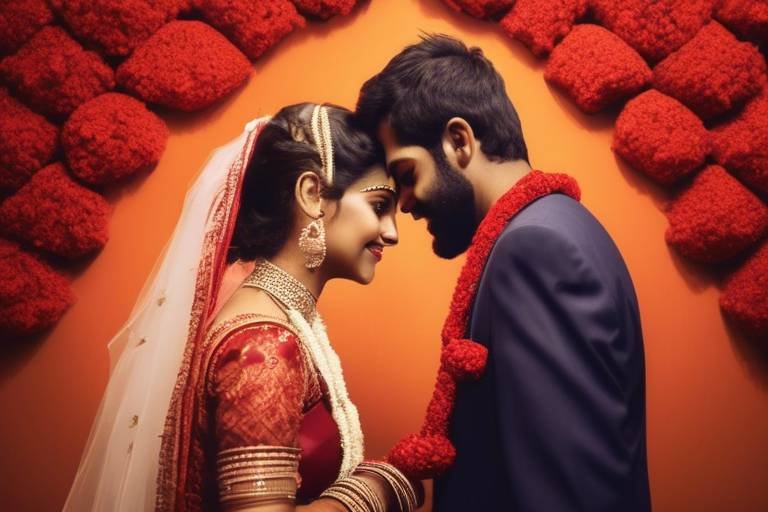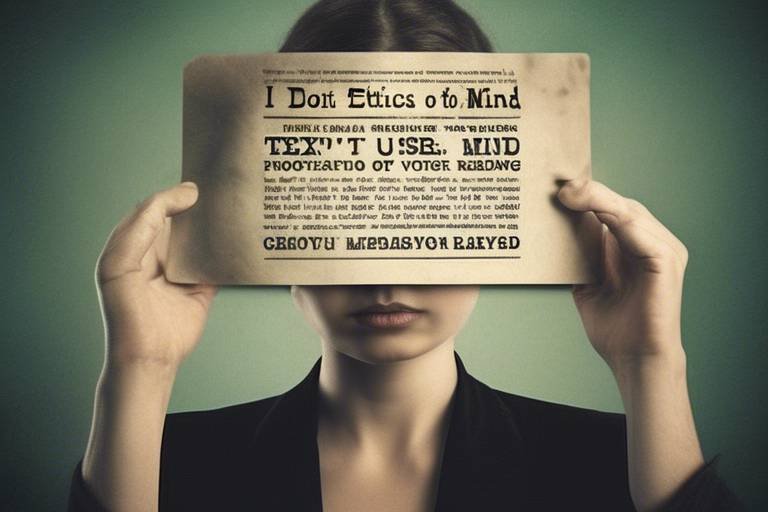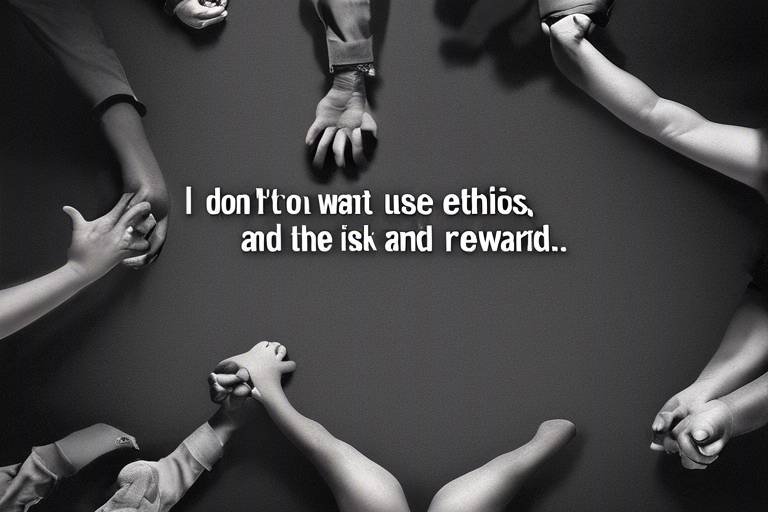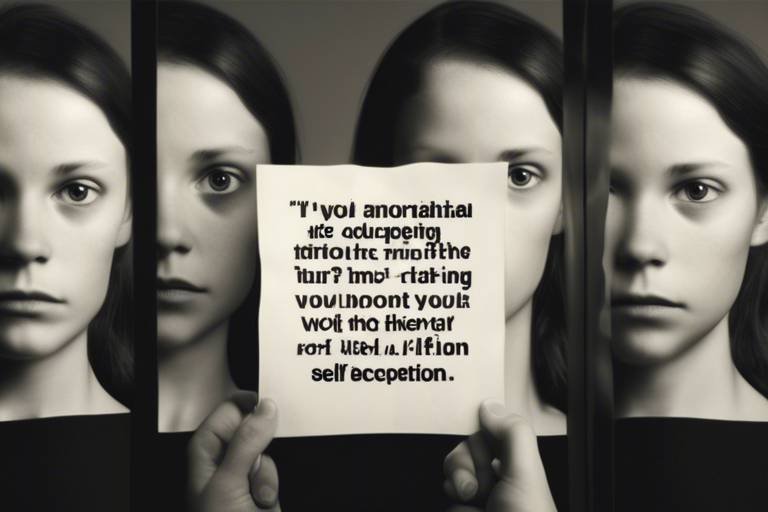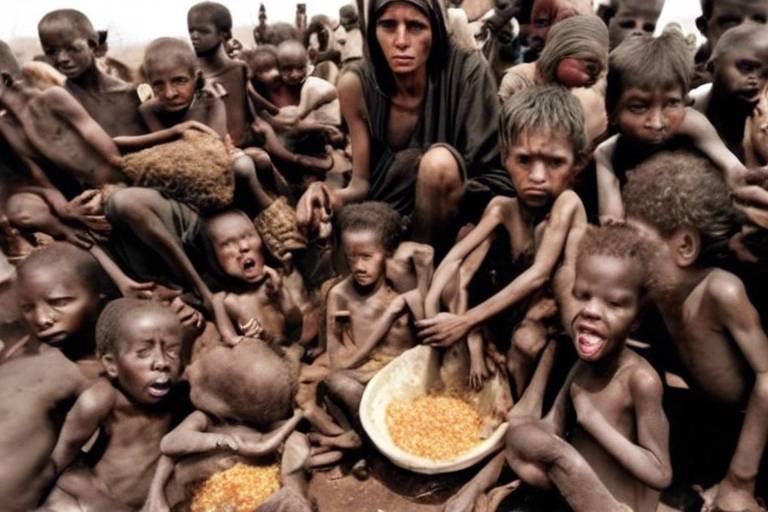Understanding the Ethics of Beauty Standards
Beauty standards are not just superficial guidelines; they are deeply rooted in our culture and society, influencing how we perceive ourselves and others. These standards can often feel like an unyielding set of rules, dictating who is deemed "worthy" or "attractive" based on narrow definitions. But have you ever paused to think about the ethical implications behind these standards? It's a complex web of history, media influence, and societal expectations that often leads to detrimental effects on mental health and self-esteem.
Throughout history, beauty standards have shifted dramatically, influenced by various factors such as culture, politics, and technology. For instance, in ancient civilizations, beauty was often associated with wealth and status, while today, it can be linked to social media presence and digital perfection. This evolution raises important ethical questions: Are these standards promoting a healthy self-image, or are they contributing to a culture of exclusion and inadequacy?
The media plays a crucial role in shaping these beauty ideals, serving as both a mirror and a mold for societal perceptions. From magazines to television to social media platforms, the representation of beauty can either uplift or undermine our sense of self. It's essential to recognize that the images we consume are often curated and filtered, presenting a distorted reality that many strive to emulate. This leads to a cycle of comparison, where individuals may feel inadequate if they don't meet these unrealistic standards.
Moreover, the impact of advertising cannot be overlooked. Often, advertisements promote a narrow definition of beauty, showcasing a limited range of body types, skin tones, and features. This not only skews public perception but can also lead to feelings of inadequacy among consumers. The message is clear: if you don't look like the models in the ads, you might not be considered beautiful. This is where the ethical dilemma deepens—is it fair for companies to profit off of insecurities?
Representation in advertising is another critical aspect to consider. The lack of diversity in beauty portrayals can perpetuate harmful stereotypes and reinforce the idea that only certain looks are acceptable. To combat this, it's vital for brands to embrace a more inclusive approach, showcasing a variety of body types, ethnicities, and ages. This shift not only benefits consumers by promoting a broader definition of beauty but also aligns with ethical marketing practices that prioritize authenticity and inclusivity.
As we navigate the complexities of beauty standards, it's essential to acknowledge the significant relationship between these standards and mental health. Many individuals struggle with body image issues, often exacerbated by societal expectations. This can lead to a host of mental health challenges, including anxiety, depression, and eating disorders. Understanding this connection is crucial for fostering a more compassionate and ethical dialogue around beauty.
In conclusion, the ethics of beauty standards are multifaceted and deeply intertwined with our cultural narratives. By challenging traditional notions of beauty and advocating for diversity and inclusivity, we can begin to reshape the conversation. It's not just about what we see in the mirror but how we feel about ourselves and each other. Let's strive for a world where beauty is defined by individuality and self-acceptance, rather than a rigid checklist of traits.
- What are beauty standards? Beauty standards are societal norms that dictate what is considered attractive or desirable based on various criteria.
- How do beauty standards affect mental health? Unrealistic beauty standards can lead to anxiety, depression, and low self-esteem, as individuals may feel pressured to conform.
- Why is representation important in media? Diverse representation helps challenge narrow beauty ideals and promotes a more inclusive understanding of beauty.
- What is the body positivity movement? The body positivity movement advocates for the acceptance of all body types, encouraging individuals to embrace their unique beauty.

The Historical Context of Beauty Standards
This article explores the ethical implications of beauty standards in society, examining their impact on individuals, culture, and the media, while promoting a more inclusive and diverse perspective on beauty.
Understanding how beauty standards have evolved over time helps us grasp their societal implications and the cultural narratives that shape our perceptions of attractiveness. From the ancient Greeks who celebrated symmetry and proportion to the curvaceous figures favored during the Renaissance, beauty ideals have always been a reflection of the values and beliefs of their time. For instance, in ancient Egypt, beauty was often associated with wealth and power, as seen in the elaborate cosmetics and jewelry worn by both men and women.
Fast forward to the 20th century, and we see a dramatic shift in beauty standards influenced heavily by cultural movements, technological advancements, and media representation. The Roaring Twenties introduced a more liberated view of beauty, epitomized by the flapper look, which celebrated youthfulness and a boyish figure. However, this was soon followed by the post-World War II era, where curvy figures, exemplified by icons like Marilyn Monroe, became the epitome of beauty. This fluctuation in standards raises an important question: are beauty ideals merely a product of societal change, or do they also shape the very fabric of our culture?
As we delve deeper into the history of beauty standards, we can identify key factors that have influenced these ideals:
- Historical Events: Wars, economic shifts, and social movements have all played a role in redefining what is considered beautiful.
- Technological Advancements: The invention of photography and later, digital media, has drastically altered how beauty is portrayed and perceived.
- Cultural Exchange: Globalization has led to a blending of beauty ideals, creating a more diverse but often conflicting set of standards.
Moreover, the impact of colonialism cannot be overlooked. Many non-Western cultures faced pressure to conform to Western beauty ideals, often leading to a devaluation of their own cultural standards. This cultural imperialism has left lasting scars, where individuals may feel compelled to alter their appearance to fit a narrow definition of beauty. As we examine the historical context, it becomes clear that beauty standards are not static; they are dynamic constructs that reflect the complexities of human society.
In addition to cultural influences, the role of philosophy and art has been pivotal in shaping beauty standards. The Greeks believed in the concept of kalokagathia, a harmony of physical beauty and moral virtue. This ideal has persisted in various forms throughout history, influencing not only art but also societal values around beauty. Artists like Botticelli and Renoir captured the beauty of their eras, often reinforcing the prevailing ideals while simultaneously challenging them through their unique interpretations.
In conclusion, the historical context of beauty standards reveals a complex interplay of cultural, social, and economic factors that have shaped our understanding of attractiveness. As we continue to navigate these evolving standards, it is essential to recognize the historical narratives that inform our perceptions and challenge us to broaden our definitions of beauty.
- What are beauty standards? Beauty standards are societal norms that define what is considered attractive or desirable in appearance.
- How do beauty standards affect mental health? Unrealistic beauty standards can lead to issues such as low self-esteem, body image dissatisfaction, and eating disorders.
- Why is diversity in beauty representation important? Diverse representation allows for a broader understanding of beauty, promoting acceptance and self-love among individuals of all backgrounds.

The Role of Media in Shaping Beauty Ideals
The media, in its various forms, acts as a powerful mirror reflecting and shaping societal beauty standards. From glossy magazine covers to social media feeds, the images we consume daily influence our perceptions of what is considered beautiful. But have you ever stopped to think about how these ideals are constructed? Who decides what is attractive, and how does this affect our self-image? It's a complex web, woven from cultural narratives, historical context, and commercial interests.
Historically, beauty standards have been dictated by societal norms that often reflect the values and aspirations of a particular time. For instance, the Renaissance period celebrated fuller figures, associating them with wealth and health, while the 20th century saw the rise of the slim, model-like silhouette. Today, we are bombarded with images that often depict an unrealistic and narrow definition of beauty. This is where the media plays a crucial role—by continuously promoting a specific look, it shapes our expectations and desires.
Advertising, in particular, is a significant player in this game. It often promotes an idealized version of beauty that is not only unrealistic but also unattainable for the average person. Think about it: how many times have you seen an ad featuring a model with perfect skin, hair, and body? Such portrayals can create a false narrative, leading consumers to believe that they need to look a certain way to be valued or accepted. This pressure can be especially overwhelming for young people who are still forming their identities and self-worth.
When we delve deeper into advertising, we see a pattern emerge. The images that dominate our screens often reflect a narrow definition of beauty that excludes many body types, skin tones, and features. This lack of diversity not only affects individual self-esteem but also reinforces harmful stereotypes. For instance, a study revealed that 70% of women feel pressured to meet certain beauty standards set by the media. This pressure can lead to a myriad of issues, including anxiety, depression, and eating disorders.
The lack of representation in advertising is a critical issue that needs addressing. When consumers see only a limited view of beauty, it perpetuates the idea that only certain looks are desirable. However, the tide is slowly turning. Many brands are now recognizing the importance of inclusivity and are starting to feature models of different sizes, ethnicities, and ages. This shift is not just a trend; it's a necessary step towards redefining beauty norms. Representation matters because it allows individuals to see themselves reflected in the media, fostering a sense of belonging and acceptance.
In recent years, social media has emerged as a double-edged sword in the conversation about beauty standards. On one hand, platforms like Instagram and TikTok have provided a space for diverse voices and body types to be celebrated. Influencers and everyday users alike are challenging traditional beauty norms by showcasing their authentic selves. However, the flip side is that social media can also exacerbate feelings of inadequacy. The constant comparison to curated images and the pressure to fit into a specific mold can lead to detrimental effects on mental health.
Ultimately, the media's role in shaping beauty ideals is profound and multifaceted. It can either uplift and empower or diminish and discourage. As consumers, we must be mindful of the messages we absorb and advocate for a broader, more inclusive definition of beauty. By doing so, we can help create a culture that values diversity and encourages self-acceptance, paving the way for future generations to embrace their unique beauty.
- How do beauty standards affect mental health? Beauty standards can lead to low self-esteem, body image issues, and mental health disorders like anxiety and depression.
- What role does social media play in beauty standards? Social media can both challenge and reinforce beauty standards, offering a platform for diverse representations while also promoting unrealistic ideals.
- Why is representation important in media? Representation allows individuals to see themselves reflected in media, fostering acceptance and a sense of belonging.
- How can we challenge traditional beauty norms? By advocating for inclusivity and supporting brands that celebrate diversity, we can help redefine beauty standards.
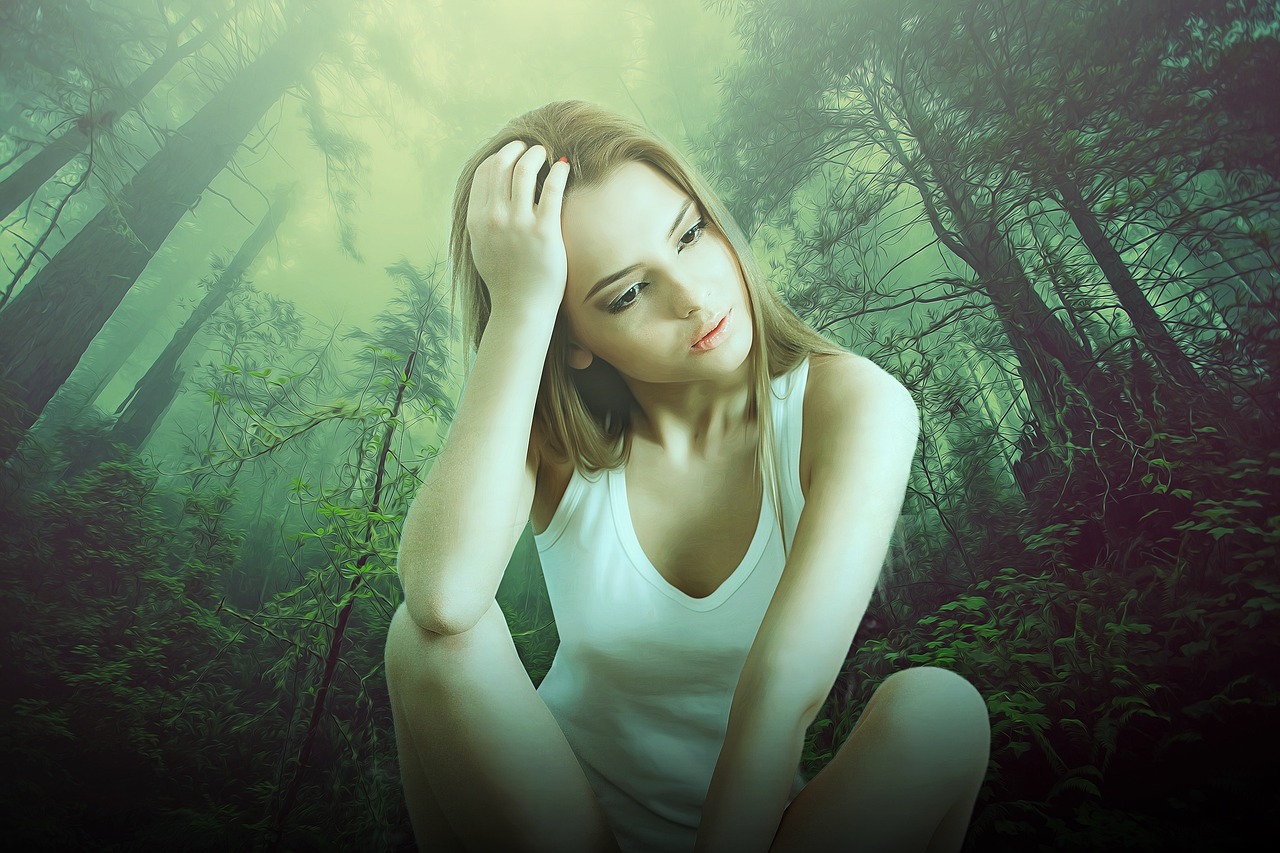
Advertising and Beauty Norms
Advertising has a profound influence on our perceptions of beauty, often presenting a narrow and unrealistic definition of what it means to be attractive. From glossy magazine spreads to high-budget commercials, the images we see are meticulously crafted to sell not just products but also ideals. These ideals can create a distorted sense of reality, leading many to believe that beauty is synonymous with a specific look, body type, or skin tone. The pressure to conform to these standards can be overwhelming, impacting self-esteem and body image.
Consider this: when you flip through a fashion magazine, how often do you see diversity in body shapes or ethnic backgrounds? The lack of representation sends a message that only a select few are worthy of admiration. This is particularly troubling because advertising shapes cultural narratives and societal norms. It can create a feedback loop where the same standards are perpetuated, making them seem like the only acceptable form of beauty. For instance, a recent study revealed that over 70% of women felt inadequate after viewing beauty ads that featured predominantly slim, light-skinned models.
Moreover, the impact of advertising extends beyond individual self-esteem. It also influences consumer behavior. When people feel that they don’t measure up to the ideals presented, they are more likely to purchase products that promise to help them achieve that ideal. This cycle of consumption is not only financially draining but also emotionally taxing. The pressure to buy into these beauty norms can lead to a variety of mental health issues, including anxiety and depression.
To illustrate the impact of advertising on beauty norms, consider the following table that highlights some common beauty products and the ideals they promote:
| Product | Promoted Ideal | Target Audience |
|---|---|---|
| Skin Whitening Cream | Fair skin is more beautiful | Women of color |
| Weight Loss Supplements | Thinness equals attractiveness | Overweight individuals |
| Anti-Aging Creams | Youthfulness is desirable | Older adults |
This table exemplifies how advertising not only reflects societal beauty norms but actively shapes them. By promoting certain ideals, advertisers can create a perception of beauty that is both exclusive and damaging. However, it’s essential to recognize that change is possible. As consumers become more aware of these tactics, they can demand greater representation and inclusivity in advertising.
In conclusion, while advertising plays a significant role in shaping beauty norms, it is crucial for us to question and challenge these standards. By advocating for a broader definition of beauty that includes diverse body types, skin tones, and ages, we can begin to dismantle the unrealistic ideals that have been ingrained in our culture. It's time to embrace a more inclusive perspective on beauty, one that celebrates individuality rather than conformity.
- How do beauty standards affect mental health? Beauty standards can lead to feelings of inadequacy, anxiety, and depression, especially when individuals feel they cannot meet these unrealistic ideals.
- What role does social media play in beauty norms? Social media can both positively and negatively influence beauty standards by providing a platform for diverse representations while also perpetuating unrealistic ideals.
- How can I promote body positivity? You can promote body positivity by celebrating all body types, challenging negative self-talk, and supporting brands that embrace diversity in their advertising.
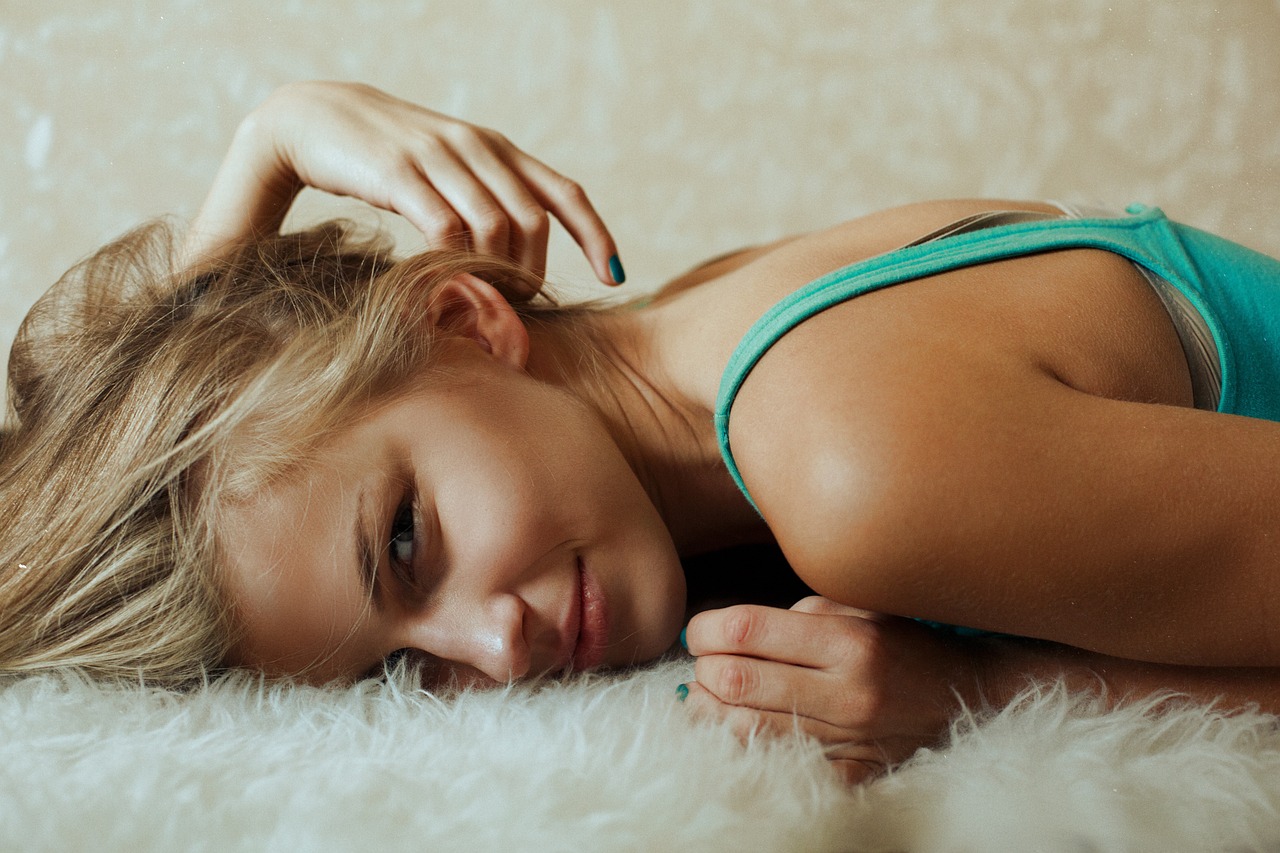
Representation in Advertising
When we think about advertising, what often comes to mind? Flashy images, catchy slogans, and the promise of happiness through products. But beneath this shiny surface lies a deeper issue: the representation of beauty. Advertising has a profound impact on how we perceive beauty standards, often perpetuating a narrow definition that excludes many. This lack of diversity in representation not only shapes societal norms but also influences individual self-esteem and body image.
Consider this: how many times have you seen an advertisement featuring a model who looks like you? If you’re part of a marginalized group, the answer might be “not often.” This absence of representation can lead to feelings of inadequacy and the belief that only a specific type of beauty is acceptable. For instance, advertisements frequently showcase slim, young, and predominantly white models, sending a message that this is the ideal. This not only alienates those who don’t fit into this mold but also reinforces harmful stereotypes about attractiveness.
To illustrate the stark contrast in representation, let’s take a look at a table that highlights the diversity (or lack thereof) in advertising campaigns:
| Year | Percentage of Diverse Models | Type of Diversity |
|---|---|---|
| 2010 | 10% | Ethnic Diversity |
| 2015 | 25% | Body Size Diversity |
| 2020 | 40% | Gender and Age Diversity |
This table shows a gradual increase in the representation of diverse models over the years, but it also highlights that there is still a long way to go. While we’ve seen some progress, the journey toward inclusivity in advertising is ongoing. Brands that choose to feature a variety of body types, skin tones, and ages not only contribute to a more realistic portrayal of beauty but also resonate with a broader audience. When people see themselves represented in advertisements, it fosters a sense of belonging and acceptance.
Moreover, the impact of representation extends beyond just visual diversity. It influences the narratives we tell about beauty and self-worth. When brands embrace inclusivity, they challenge the status quo and encourage individuals to embrace their unique beauty. This shift can lead to a more positive self-image among consumers, as they begin to recognize that beauty is not a one-size-fits-all concept.
In conclusion, the representation of beauty in advertising is a critical factor in shaping societal standards. By promoting a broader definition of beauty, brands can play a pivotal role in redefining norms and fostering an environment where everyone feels valued. As consumers, we have the power to demand more from advertisers—more diversity, more authenticity, and more representation. After all, beauty comes in all shapes, sizes, and colors, and it’s high time our advertisements reflected that reality.
- Why is representation in advertising important? Representation in advertising is crucial because it shapes societal beauty standards and influences individual self-esteem. When diverse groups see themselves represented, it promotes inclusivity and acceptance.
- How can consumers advocate for better representation? Consumers can advocate for better representation by supporting brands that prioritize diversity and by voicing their opinions on social media platforms.
- What are some examples of brands that have embraced diversity? Brands like Fenty Beauty, Aerie, and Dove have made significant strides in promoting diverse beauty standards through their advertising campaigns.
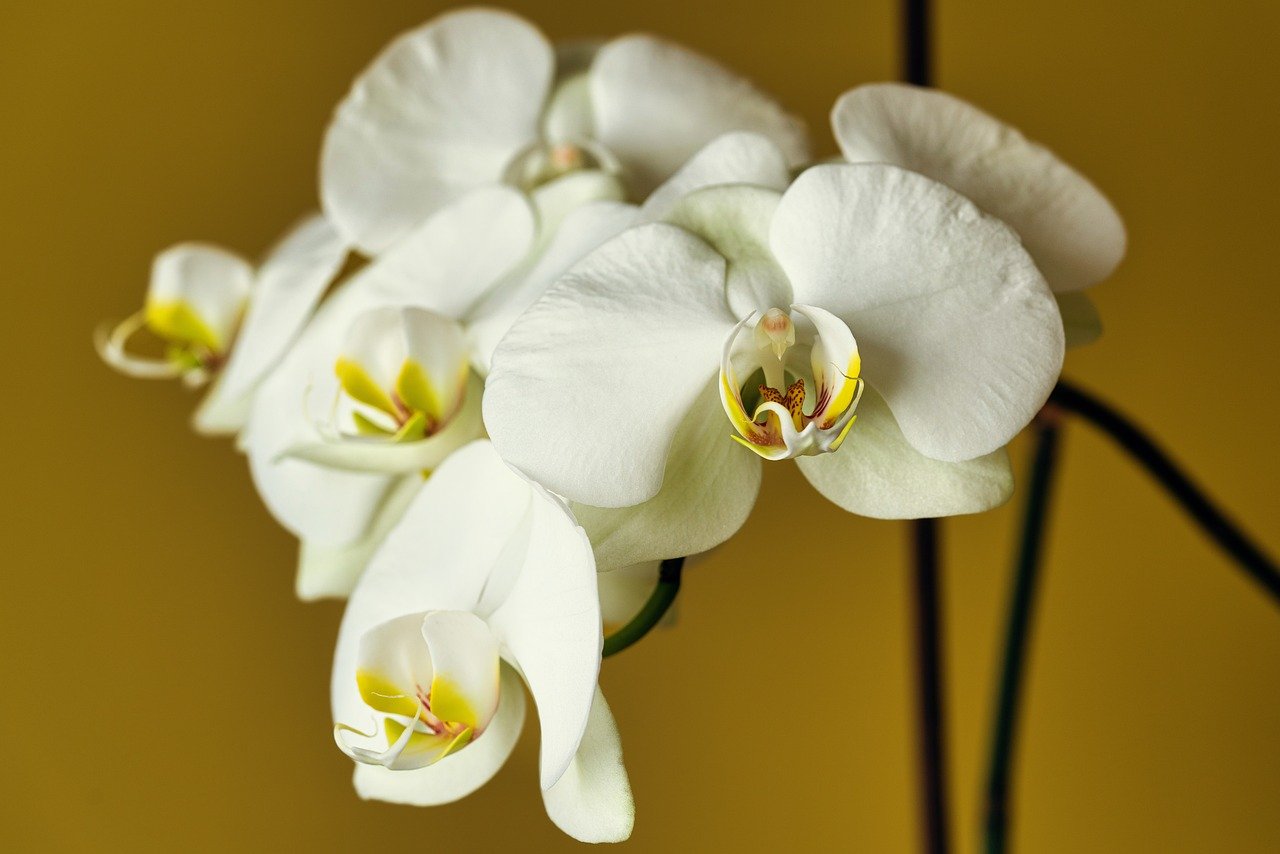
The Impact of Social Media
In today's digital age, social media is not just a platform for sharing moments; it has become a powerful force that shapes our understanding of beauty. With platforms like Instagram, TikTok, and Snapchat at our fingertips, we are constantly bombarded with images that set the tone for what is considered attractive. But have you ever stopped to think about how this relentless stream of curated content affects our self-perception? It’s a double-edged sword, really. On one hand, social media can empower individuals to embrace their unique looks and celebrate diversity, but on the other hand, it can perpetuate unrealistic beauty standards that lead to feelings of inadequacy.
Consider this: a typical scroll through your feed might showcase influencers flaunting their perfectly sculpted bodies, flawless skin, and designer outfits. This can create a skewed perception of reality, making it easy to forget that many of these images are heavily edited or filtered. In fact, studies have shown that exposure to idealized images on social media can lead to a phenomenon known as "social comparison," where individuals measure their own worth against these often unattainable standards. This can result in negative body image and low self-esteem, particularly among young people who are still forming their identities.
Moreover, let’s not overlook the role of algorithms in this equation. Social media platforms are designed to show us content that keeps us engaged, which often means highlighting posts that conform to popular beauty ideals. This creates a feedback loop where only certain types of beauty are celebrated, further marginalizing those who don’t fit the mold. For instance, a recent survey found that:
| Percentage of Users | Feeling Pressured to Conform to Beauty Standards |
|---|---|
| 70% | Women |
| 50% | Men |
This table illustrates that a significant number of users, especially women, feel pressured to conform to beauty standards perpetuated by social media. The impact is profound; it can lead to issues such as anxiety, depression, and even eating disorders. It’s crucial to recognize that while social media can be a platform for self-expression, it can also be a breeding ground for comparison and self-doubt.
However, it’s not all doom and gloom! Social media has also given rise to movements that challenge these narrow definitions of beauty. Hashtags like #BodyPositivity and #AllBodiesAreBeautiful have created communities that celebrate diversity and encourage self-acceptance. Influencers and everyday users alike are using their platforms to promote messages of inclusivity, reminding us that beauty comes in all shapes, sizes, and colors. This shift is vital in redefining what beauty means in our society.
In conclusion, the impact of social media on beauty standards is complex and multifaceted. While it can perpetuate unrealistic ideals, it also holds the potential to challenge and redefine those very norms. As users, we have the power to curate our feeds and engage with content that uplifts and empowers rather than diminishes our self-worth. So, the next time you find yourself scrolling through your feed, ask yourself: Are you celebrating beauty in all its forms, or are you falling into the trap of comparison? The choice is yours.
- How does social media influence body image?
Social media can create unrealistic beauty standards, leading to negative body image and self-esteem issues through constant comparison with idealized images. - Can social media promote positive body image?
Yes! Movements like body positivity on social media encourage acceptance of diverse body types and challenge traditional beauty norms. - What can I do to improve my self-image while using social media?
Curate your feed by following accounts that promote body positivity and diversity, and take breaks from social media when needed.
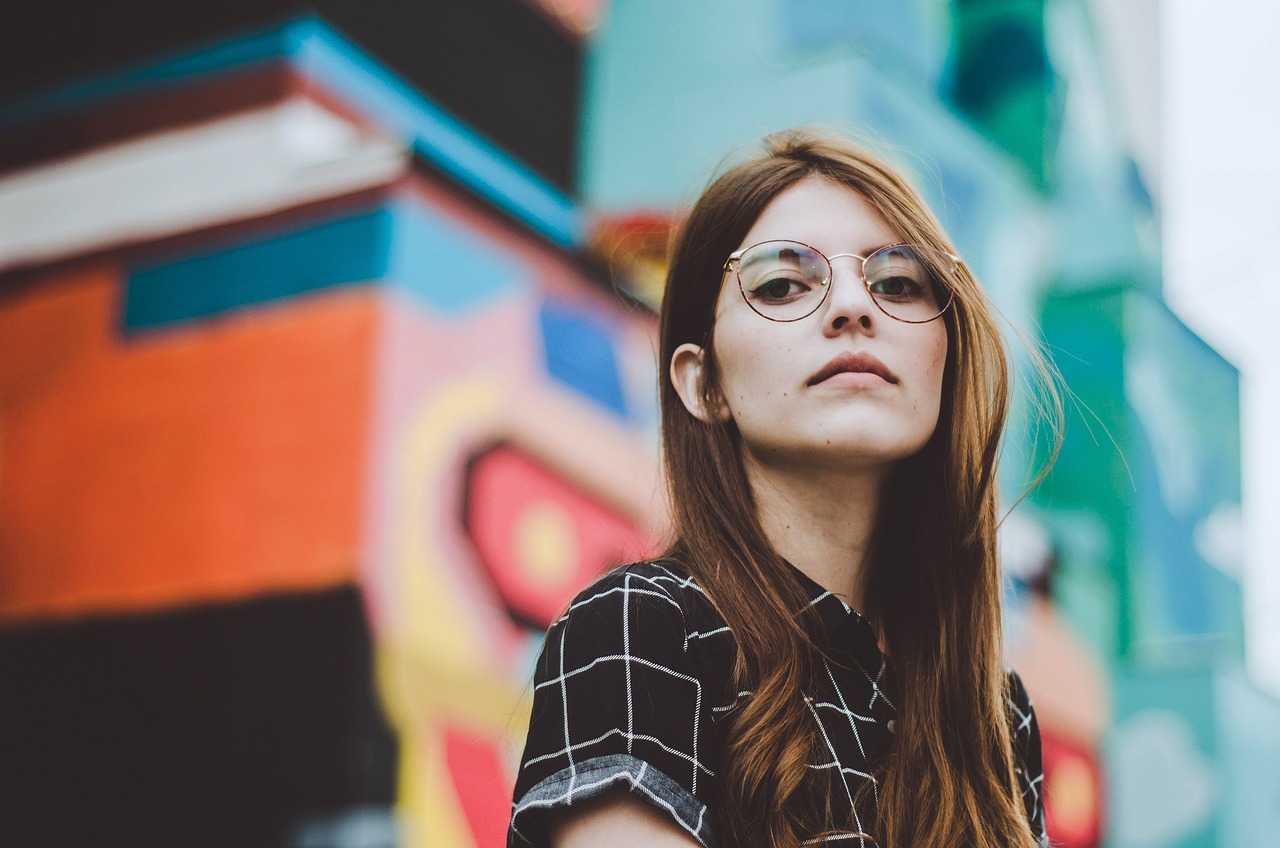
Body Image and Mental Health
When we talk about body image, we're diving into a complex realm that intertwines with our mental health in profound ways. Body image refers to how we perceive our own bodies and how we think others see us. It's not just about the physical; it's deeply emotional and psychological. The relationship between body image and mental health is significant, affecting our self-esteem, confidence, and overall well-being. Have you ever looked in the mirror and felt a wave of dissatisfaction wash over you? You're not alone. Many people grapple with similar feelings, often fueled by societal expectations and beauty standards that seem impossible to meet.
Research shows that negative body image can lead to a host of mental health issues, including anxiety, depression, and eating disorders. For instance, a study published in the Journal of Health Psychology found that individuals who harbor negative body perceptions are more likely to experience symptoms of depression. This is alarming, considering that many of us are bombarded daily with images and messages that glorify a narrow definition of beauty. It’s like being caught in a never-ending cycle of comparison, where the ideal is always just out of reach.
Moreover, the impact of beauty standards is not just limited to women; men are increasingly feeling the pressure to conform to certain ideals as well. The rise of social media has amplified these pressures, creating a platform where unrealistic portrayals of beauty are not just common but celebrated. Think about it—how often do you scroll through your feed and see images that make you question your own worth? This phenomenon can lead to what experts call social comparison, where individuals measure their value against the curated lives of others, often leading to feelings of inadequacy.
It's crucial to understand that the consequences of poor body image extend beyond individual feelings of self-doubt. In a society that prizes appearance, people may find themselves facing discrimination in various aspects of life, including employment and relationships. The societal pressure to fit a certain mold can be overwhelming, leading to a significant decline in mental health. The World Health Organization even recognizes that body image issues can lead to severe psychological distress, emphasizing the need for a cultural shift towards acceptance and diversity.
To combat these issues, it's essential to foster a culture of body positivity and acceptance. This could involve engaging in conversations that challenge traditional beauty norms and promoting diverse representations in media. Encouraging individuals to embrace their unique features can help dismantle the unrealistic standards that plague our society. After all, beauty is not a one-size-fits-all concept; it’s as varied as the individuals who embody it.
In conclusion, the connection between body image and mental health is a pressing issue that warrants our attention. By recognizing the harmful effects of societal beauty standards and advocating for a more inclusive perspective, we can begin to heal the wounds inflicted by unrealistic expectations. Remember, your worth is not defined by your appearance, but by the richness of your character and the kindness you bring into the world.
- What is body image? Body image is how you perceive your own body and how you think others see you.
- How does body image affect mental health? Negative body image can lead to anxiety, depression, and eating disorders.
- What can I do to improve my body image? Focus on self-acceptance, engage in positive self-talk, and surround yourself with supportive people.
- Why is diversity in media representation important? Increasing diversity helps to challenge unrealistic beauty standards and promotes a broader definition of beauty.
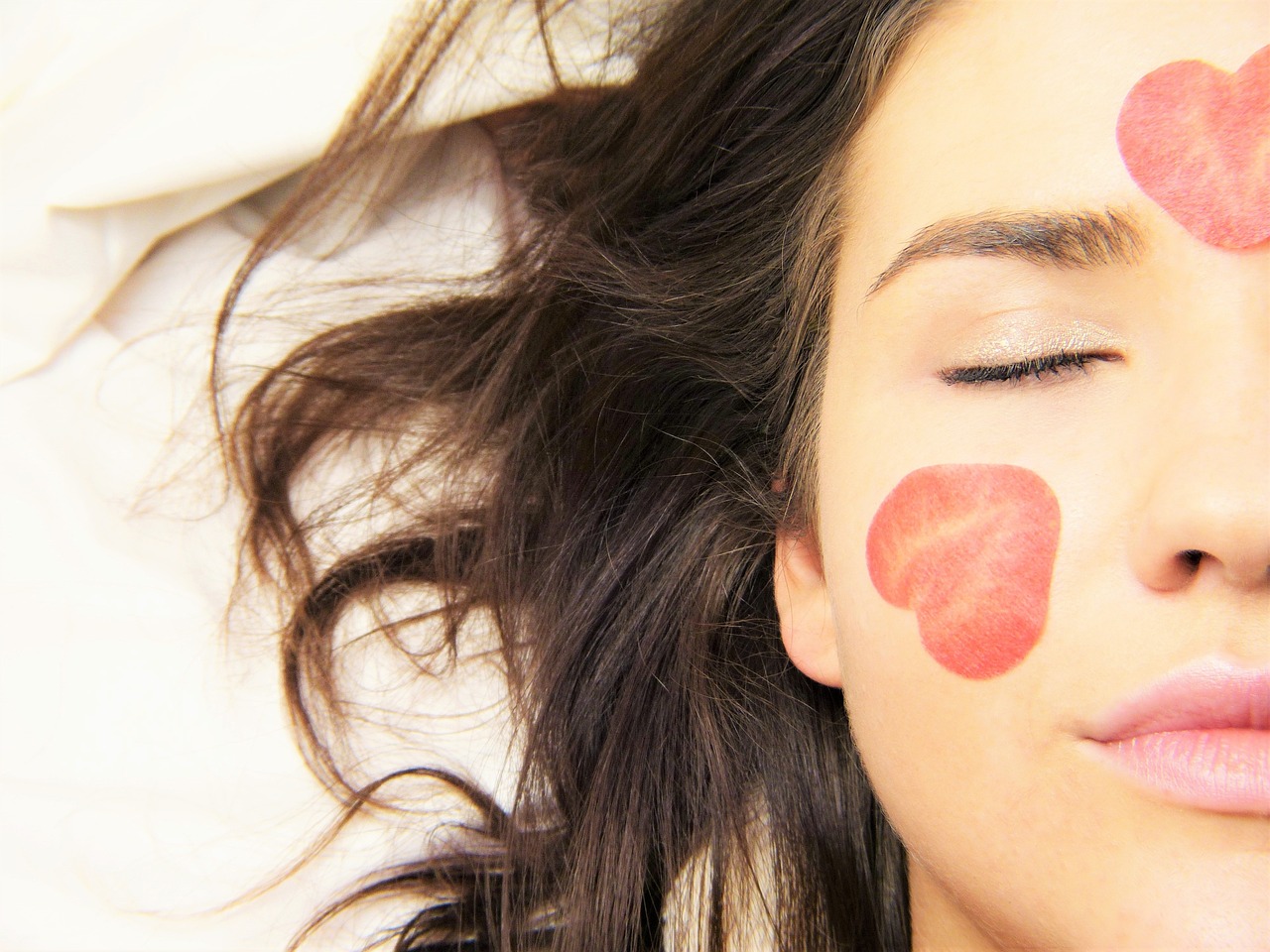
Challenging Beauty Norms
In today's world, is not just a trend; it's a revolution. We've all seen the relentless pursuit of an idealized image that often seems unattainable. But what if we flipped the script? What if we celebrated our differences instead of conforming to a narrow definition of beauty? This shift is crucial for fostering inclusivity and self-acceptance.
Movements aimed at redefining beauty are gaining momentum, and they are more than just a response to societal pressures—they are a call to action. The Body Positivity Movement, for example, advocates for the acceptance of all body types, challenging the traditional notions that have long dominated the fashion and beauty industries. This movement encourages individuals to embrace their unique shapes and sizes, promoting the idea that beauty comes in all forms.
But how does this movement actually manifest in our daily lives? It’s about more than just a hashtag or a viral post; it’s about creating a culture where everyone feels represented. When we see diverse body types in advertisements, magazines, and on our social media feeds, it sends a powerful message: you are beautiful just as you are. This representation can significantly impact self-esteem and body image, allowing individuals to feel more comfortable in their skin.
Moreover, the fight for diversity and representation in media is essential for changing beauty standards. Initiatives like the “#AllBodiesAreGoodBodies” campaign have gained traction, showcasing individuals of all sizes, ethnicities, and abilities. By amplifying these voices, we challenge the status quo and inspire others to join the movement. It’s a collective effort that requires everyone to participate—brands, influencers, and consumers alike.
While the progress is evident, there is still much work to be done. The media continues to play a pivotal role in shaping our perceptions of beauty. By supporting brands that prioritize inclusivity and demanding more from those that don’t, we can collectively redefine what beauty means in our society. It's about creating a world where everyone feels valued and accepted, regardless of their appearance.
So, the next time you encounter beauty standards that seem unrealistic, remember that you have the power to challenge them. Engage in conversations, support inclusive brands, and most importantly, practice self-love. After all, beauty is not a one-size-fits-all concept; it's a vibrant tapestry woven from our diverse experiences and identities.
- What is the Body Positivity Movement? The Body Positivity Movement advocates for the acceptance of all body types and challenges traditional beauty standards.
- How can I support diverse representation in media? You can support diverse representation by choosing to follow and promote brands and influencers that prioritize inclusivity.
- Why is challenging beauty norms important? Challenging beauty norms is essential for fostering inclusivity, promoting self-acceptance, and improving mental health.
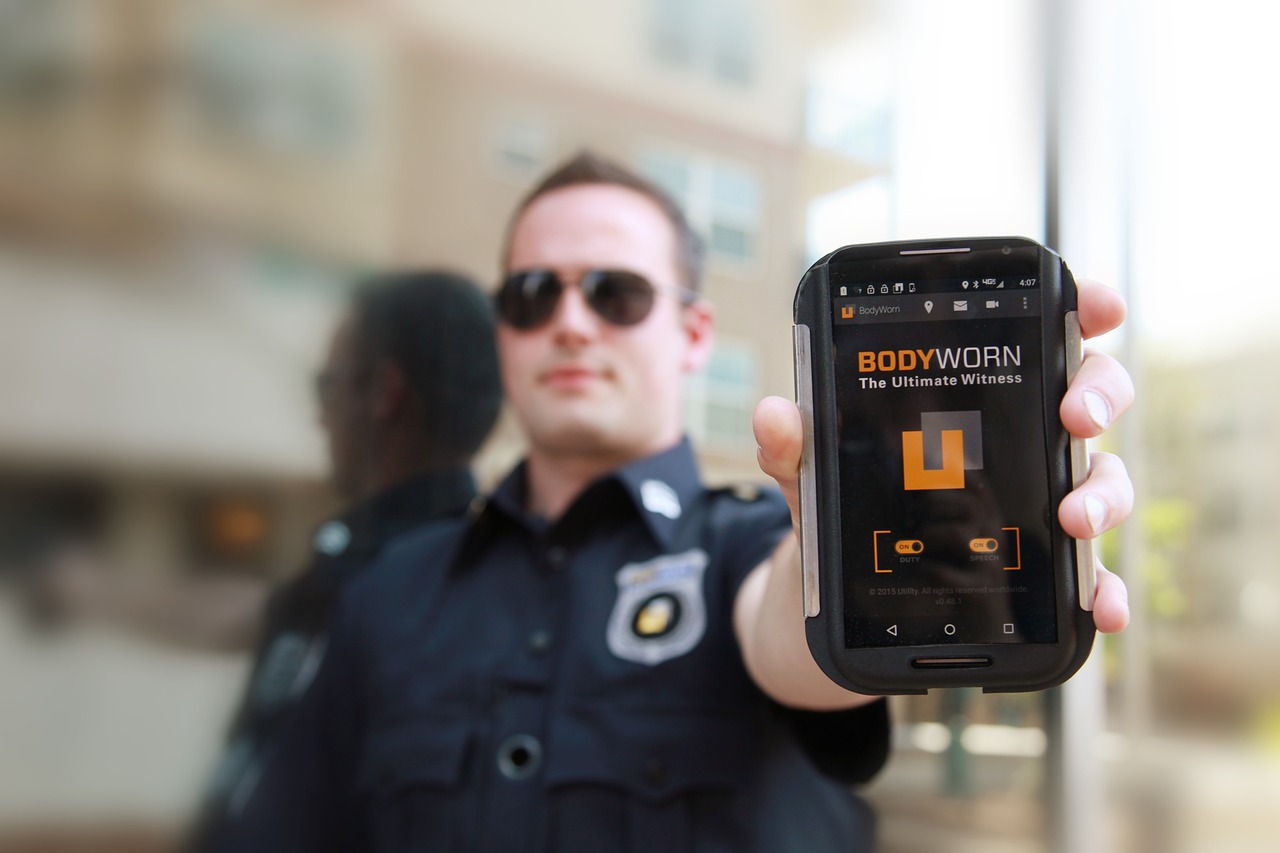
Body Positivity Movement
The has emerged as a powerful force in challenging the narrow definitions of beauty that have long dominated our society. At its core, this movement advocates for the acceptance of all body types, emphasizing that beauty is not confined to a specific size, shape, or appearance. It encourages individuals to embrace their unique bodies and promotes the idea that self-worth should not be dictated by societal standards. Imagine a world where everyone feels comfortable in their skin—sounds liberating, right?
One of the key messages of the body positivity movement is that beauty comes in all forms. This realization can be incredibly empowering, as it shifts the focus from external validation to internal acceptance. Think about it: instead of striving to fit into a mold that society has created, we can celebrate our differences and appreciate the beauty in diversity. This shift not only enhances self-esteem but also fosters a more inclusive culture where everyone feels valued.
The movement has gained momentum through social media platforms, where individuals share their stories, experiences, and images that challenge conventional beauty norms. Influencers and activists use hashtags like #BodyPositivity and #EffYourBeautyStandards to create communities that uplift and support one another. These platforms have become a digital space for individuals to express their true selves, fostering a sense of belonging and acceptance.
Moreover, the body positivity movement has sparked important conversations about mental health and self-image. Studies have shown that exposure to diverse body types can lead to improved body image and reduced feelings of inadequacy. When individuals see others who look like them celebrated in media and advertising, it can significantly impact their self-perception. It’s like looking in a mirror that reflects not just your physical appearance but your worth as a person.
However, it’s essential to recognize that the body positivity movement is not without its challenges. There are ongoing discussions about the commercialization of body positivity, where brands may exploit the movement for profit rather than genuinely supporting its principles. This raises questions about authenticity and the true intentions behind promoting inclusivity. Are companies genuinely committed to change, or are they merely jumping on the bandwagon?
In summary, the body positivity movement is a vital part of the ongoing struggle for a more inclusive definition of beauty. It encourages individuals to embrace their bodies, challenges societal norms, and promotes acceptance for all. As we continue to navigate this evolving landscape, it’s crucial to support and uplift one another, creating a world where everyone can feel beautiful, regardless of their size or appearance.
- What is the Body Positivity Movement? - The Body Positivity Movement advocates for the acceptance of all body types, promoting the idea that beauty is diverse and not limited to societal standards.
- How does the movement impact mental health? - The movement encourages self-acceptance and has been linked to improved body image and reduced feelings of inadequacy.
- Can brands be part of the Body Positivity Movement? - Yes, but it’s essential for brands to genuinely support the movement rather than exploit it for profit.
- How can I get involved in the Body Positivity Movement? - You can participate by sharing your story, supporting others, and promoting diverse representations of beauty in your community.
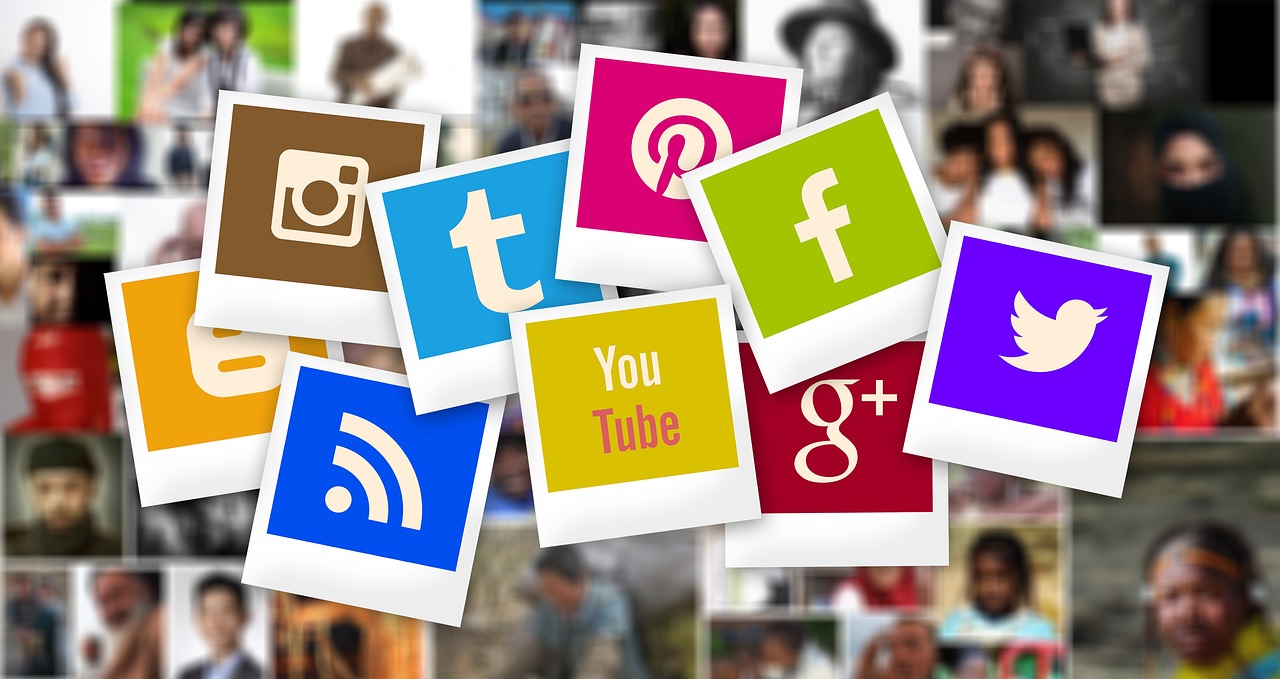
Diversity and Representation in Media
In today's world, the importance of diversity and representation in media cannot be overstated. When we turn on our screens, whether it’s television, movies, or social media, we want to see ourselves reflected in the stories being told. But for too long, media has operated under a narrow definition of beauty, often sidelining people of different races, body types, abilities, and backgrounds. This lack of representation not only skews our perception of beauty but also contributes to a culture of exclusion that can be damaging to self-esteem and self-worth.
Let’s take a moment to consider the impact of this limited representation. When media predominantly showcases a specific type of beauty—think tall, slim, and Eurocentric—what message does that send to everyone else? It can create a feeling of inadequacy and a belief that one must conform to these standards to be considered beautiful or worthy. This is where the ripple effect comes into play, influencing not just individual self-image but also societal norms and expectations.
Moreover, the push for diversity in media is not just about ticking boxes; it’s about authentic storytelling. When creators from diverse backgrounds share their narratives, they bring unique perspectives that enrich the cultural tapestry of our society. We start to see characters and stories that resonate with a broader audience, fostering empathy and understanding. For example, films like "Black Panther" and "Crazy Rich Asians" have not only performed well at the box office but have also sparked conversations about representation and the importance of seeing oneself on screen.
To illustrate the current state of representation in media, consider the following table that highlights the percentage of diverse characters in popular films over recent years:
| Year | Percentage of Diverse Characters |
|---|---|
| 2015 | 25% |
| 2018 | 32% |
| 2020 | 40% |
| 2022 | 50% |
As we can see, progress is being made, but there is still a long way to go. The media landscape is evolving, and with it comes the responsibility to ensure that all voices are heard and represented. This is where initiatives aimed at increasing diversity in storytelling become crucial. Campaigns like #RepresentationMatters and #DiversityInMedia are not just hashtags; they are movements that advocate for change and challenge the status quo.
In conclusion, embracing diversity and representation in media is essential for creating an inclusive environment where everyone feels seen and valued. It’s time for media to reflect the beautiful mosaic of humanity, where all shapes, sizes, colors, and backgrounds are celebrated. When we challenge the traditional beauty norms and advocate for broader representation, we pave the way for a future where everyone can embrace their unique beauty and feel empowered in their skin.
- Why is diversity in media important?
Diversity in media is crucial because it ensures that different perspectives and stories are represented, fostering understanding and acceptance among diverse audiences. - How can I support diversity in media?
You can support diversity in media by consuming content from diverse creators, advocating for inclusive practices in media production, and participating in discussions about representation. - What are some examples of positive representation in media?
Films and shows like "Black Panther," "Pose," and "The Farewell" showcase diverse characters and narratives that challenge stereotypes and promote inclusivity.
Frequently Asked Questions
- What are beauty standards?
Beauty standards are societal norms that define what is considered attractive or desirable in appearance. These standards can vary greatly across different cultures and time periods, often influenced by media, fashion, and social trends.
- How have beauty standards evolved over time?
Beauty standards have shifted dramatically throughout history. In the past, certain body types were celebrated, while today, there is a growing emphasis on diversity and inclusivity. Understanding this evolution helps us recognize the cultural narratives that shape our perceptions of beauty.
- What role does media play in shaping beauty ideals?
Media plays a crucial role in establishing and perpetuating beauty ideals. Through advertising, television, and social media, certain looks and lifestyles are often portrayed as the norm, influencing public perception and individual self-image.
- How does advertising affect beauty norms?
Advertising often promotes narrow definitions of beauty, leading to unrealistic expectations among consumers. This can negatively impact self-esteem, as individuals may feel pressure to conform to these ideals, which are frequently unattainable.
- Why is representation in advertising important?
The lack of diversity in advertising can reinforce harmful stereotypes and narrow beauty standards. Greater representation helps to redefine beauty, making it more inclusive and relatable for a wider audience.
- What is the impact of social media on beauty standards?
Social media has transformed the way beauty is perceived, creating both positive and negative effects. While it can foster community and promote body positivity, it can also lead to comparison and unrealistic portrayals of beauty.
- How do beauty standards affect mental health?
The relationship between beauty standards and mental health is significant. Societal expectations can lead to feelings of inadequacy, anxiety, and depression, as individuals struggle to meet these often-unrealistic ideals.
- What is the body positivity movement?
The body positivity movement advocates for the acceptance of all body types, challenging traditional beauty norms. It aims to promote self-acceptance and encourage individuals to appreciate their unique beauty.
- How can we challenge traditional beauty norms?
Challenging traditional beauty norms involves promoting inclusivity and diversity in media representation, supporting movements like body positivity, and encouraging open discussions about beauty standards and their impact on self-image.
- What initiatives are promoting diversity in media representation?
Various initiatives are working to increase diversity in media representation, including campaigns that highlight different body types, ethnicities, and ages. These efforts aim to broaden the definition of beauty and create a more inclusive environment for everyone.



